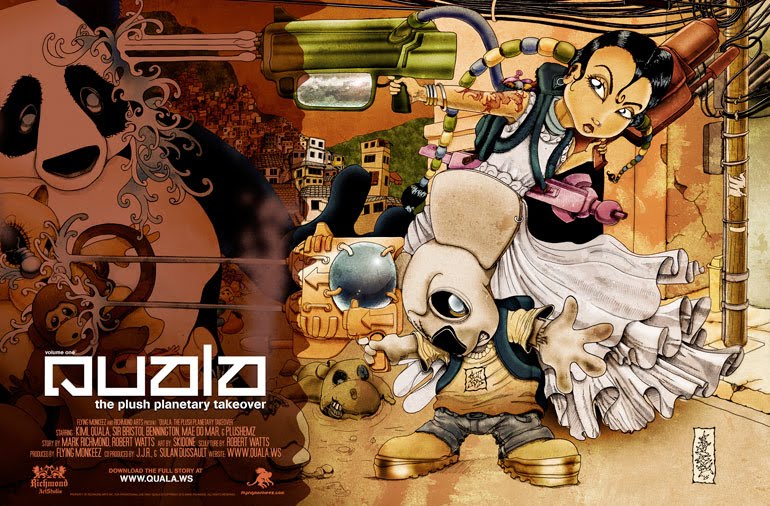Kimi lands in a place called Rocinha Favela, in Rio De Janeiro Brasil - a place briefly featured in the movie "The Incredible Hulk", http://www.hulkmovie.com/, opening scene, and also seen in the movie "City of God" http://www.miramax.com/cityofgod/
View QUALA MAPS in a larger map
While reading Book 01, you can follow along using this link from Kimi's orphanage on the top of the Rocinha mountainside, and down through the Lagoa Barra Highway.
CULTURAL LESSON
Also in this book, Kimi's orphanage is ran by Mae Do Mar - a condomble priestess -
Candomble
Candomble is an African-Brazilian religion has around two million followers. It is a syncretic religion, meaning that it is a combination of various beliefs. At the core of the religion are the traditional African beliefs of Yoruba, Fon and Bantu. Candomble also has elements of Christianity, particularly of Catholicism. Candomble means “dance in honor of the gods.” Accordingly, dance and music play important roles in the religion. At the center of Candomble is God or Oludumare. Deities called orixas serve Oludumare. Candomble does not have any holy scriptures.
Candomble History
The roots of Candomble go back to the slave trade. Enslaved Africans were shipped to Brazil. These Africans tried to follow their religious beliefs and practice their customs, but were not allowed. Christian slave owners tried to convert them. Although many slaves converted to Christianity, others still practiced their religions in secret or disguised their practices as those of Catholicism. Up to the 1970s, Africans were persecuted if they were caught practicing Candomble. Ever since that time, the religion has become very popular in Brazil, especially in the northeastern city of Salvador da Bahia. Many Africans today visit the city to learn more about their ancestors and their religious beliefs. For many Africans, Candomble is not only a religion but also a cultural identity. Some followers want to rid the elements of Christianity from the religion and take it back to its pure form.
Candomble Beliefs
The concept of good and bad does not exist for followers of Candomble; however doing bad has its consequences. The goal of each person is to carry out his or her destiny, which is controlled by the orixa. Each person’s orixa also acts as a protector. Worshippers perform special dances to allow the orixa to possess them. Orixas are deified ancestors from recent or ancient history. Also known as viduns and inkices, they are spirit gods that link humans to the spiritual world. Each orixa is connected to a force in nature including a certain food, animal, and more. A person's personality is a reflection of their orixa. Orixas are collectively called Baba Egum or Egungun. The moral code of Candomble is regulated by the Baba Egum, who ensures the continuity of morals from one generation to the next.
Candomble Customs
During major rituals, priests and priestesses disguise as Baba Egum. The worship takes place in the form of dances and songs. Dances call the orixa to enter the body. When a dancer becomes possessed, they enter a trancelike condition and publicly act out scenes from the community life through dance. When the orixa leaves the body, the trance ends. Women play a significant role in Candomble. Women, called “mothers of the holy one” lead services and train future priestesses. The sacred places for followers of Candomble are the terreiro, or temples. These structures have indoor and outdoor sections and designated places for the gods. Worshippers enter the terreiro in clean clothes. They also splash water on themselves before entering so they clean themselves from the impurity of the outside world.
Excerpts taken from the site: http://www.typesofreligion.com
Stay tuned for Book 02 - QUALA - Escape from Headhunter Island - November 2010


No comments:
Post a Comment